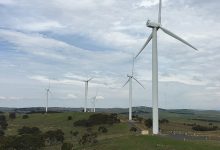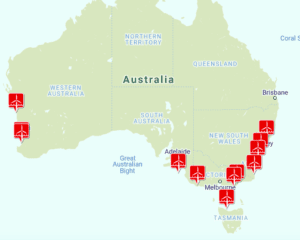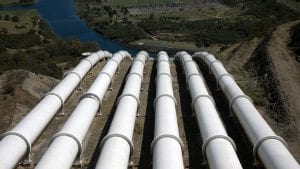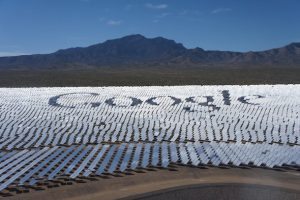The weather may be miserable across many parts of the Australian east-coast, but it has been good news for the wind energy industry, with record amounts of wind generation over the last few days.
Strong winds, which has brought wintery conditions with cold air being swept up from the Antarctic region, have been a significant boost for wind farms scattered across South Australia, Victoria and Tasmania, which helped push wind generation to a new record high.
Analysis published by Geoff Eldridge on NEM Log showed wind reaching a new all time high in the National Electricity Market, reaching 4,423 MW on Tuesday 28 May, setting a new record despite the curtailment of several wind generators in South Australia to satisfy that state’s operating requirement, which caps output at between 1,200 and 1,450MW, depending on how many and which gas plants are operating.
Throughout many parts of the day, wind was the second largest source of electricity generation in the National Energy Market, after black coal, and contributing a greater supply of energy than either brown coal or gas generation.
Wind also set a new record for daily generation, producing 92,023 MWh on Tuesday, smashing the previous daily record set in July 2018.
Market data also showed the Hornsdale Power Reserve Battery, the utility scale Tesla battery co-located with the Hornsdale Wind Farm, being used to manage the curtailment of wind generation in South Australia.
To date, the Hornsdale battery has been mostly recognised for its contribution to grid security, and its contribution to frequency and ancillary services, both of which have been very profitable for the battery operator. However, energy arbitrage is also a key revenue source, and management of the high levels of wind generation saw the battery used to manage surplus generation in a manner that is unusual for the battery.
The battery appeared to complete three full charge-discharge cycles, delivering up to 80MW of stored supply into the market.
The record wind generation is the culmination of the strong investment in the sector over the last couple of years after an effective investment freeze following the election of the Abbott Government, and threats were made for the abolition of the Renewable Energy Target.
With the Government backing down from those threats, more ambitious targets being put in place by State and Territory Governments, and the continued fall in technology costs, investment in new wind projects picked up again in the last couple of years, pushing wind generation to new records.
2018 was a record year for renewable energy investment in Australia, reaching $20 billion and ending the year with 14.5GW of new generation was under construction or financially committed. April saw the first generation from the 212MW Lincoln Gap Wind Farm, located near Port Augusta.
The Clean Energy Finance Corporation also celebrated its own wind milestone, announcing that its portfolio of wind investments had reached 2GW, reaching financial close on the Collector Wind Farm.










